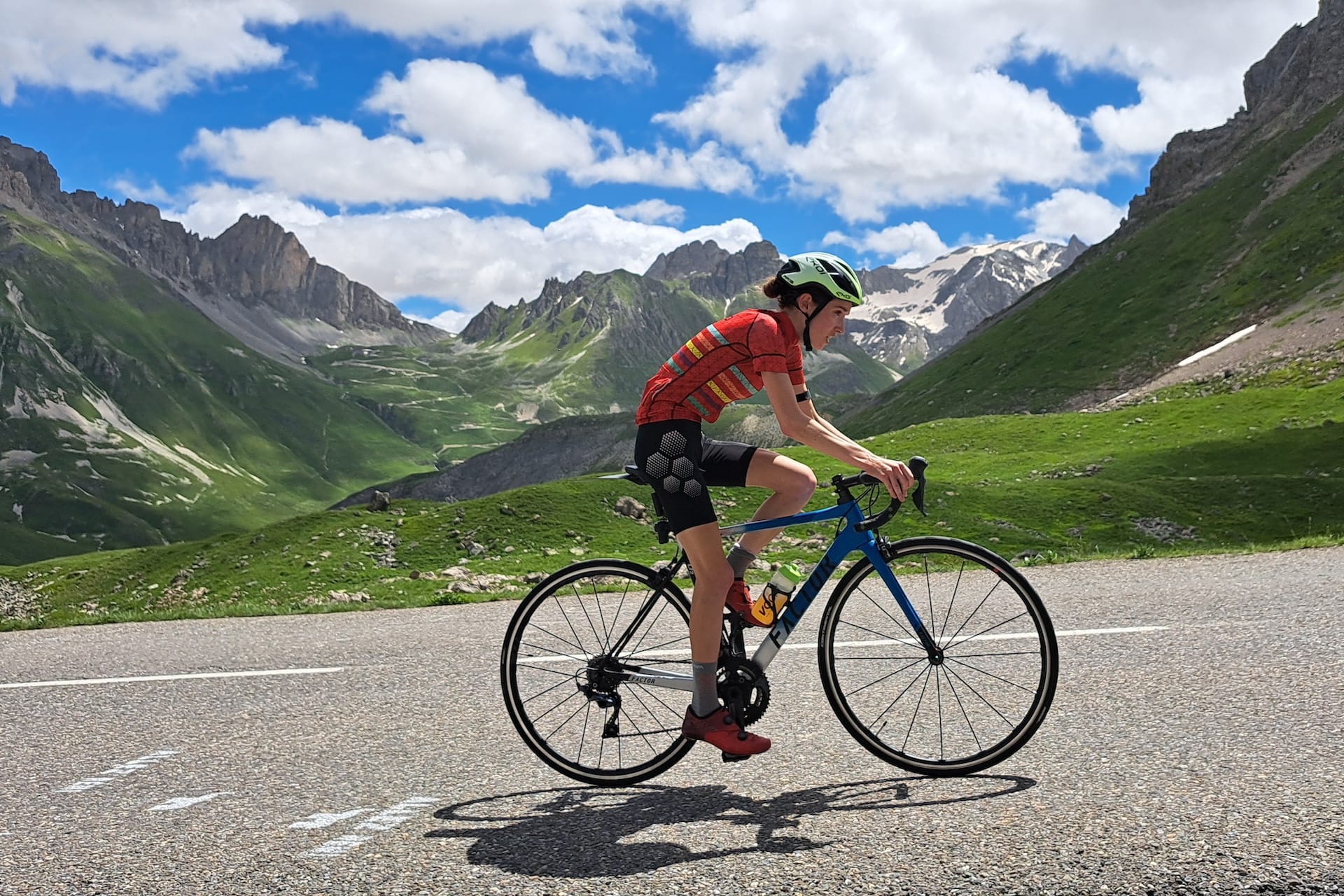There were perhaps only two surprising things about Tadej Pogačar's ascension to race leader status at the 2024 Giro d’Italia: 1) that it took him until stage 2 to achieve said feat and 2) that his first pink jersey was paired with purple shorts.
Somewhat less surprisingly, the UCI took issue with those purple shorts and threatened Pogačar with disqualification, citing a rule that doesn’t exist. Meanwhile, they seemingly turned a blind eye to similar two-tone suits (including purple shorts paired with the Ciclamino points leader’s suit) worn by the other classification leaders at Giro. Finally, Escape Collective has learned the UCI has now done a complete U-turn and given Pogačar clearance to race in the two-tone suit.
What's unclear is why the UCI cared to begin with. Pogačar’s purple pants weren’t a marginal gain. There were no wattage savings or speed increases. While the combo was quite close to the Ciclamino kit, which might have caused confusion, the exact colour scheme was created by Castelli, the Giro's official clothing sponsor, and did so with the benediction of race organisers. How the UCI dealt with the episode is one of the clearest examples yet of why it’s failing in every other technical battle it faces.
I never meant to cause you any sorrow
Pogačar raced stage 3 of the Giro in a one-piece race or speed suit, as is common practice in the pro peloton these days. Again, the Giro organisers provided him with the suit, in turn supplied to them by Castelli, which has been the race's partner for leader's kits since 2018. The suit had a pink upper half in keeping with the Giro’s pink leader’s jersey and a purple lower/shorts section. It is this lower purple section the UCI has taken issue with, although it is not entirely clear why; the race jury that initially raised the issue declined to comment on it, according to GCN.
Whatever the concern, the UCI were not happy and, as first reported by CyclingNews, the vice president of the race jury at the Giro d’Italia threatened Pogačar with disqualification should he line up in the two-tone purple and pink suit again. That's despite the fact both Tim Merlier and Jonathan Milan both raced in two-tone version of the points leader’s Ciclamino jersey/suit in the two stages since, as did Lilian Calmejane and Dani Martínez in the blue mountains classification suits.
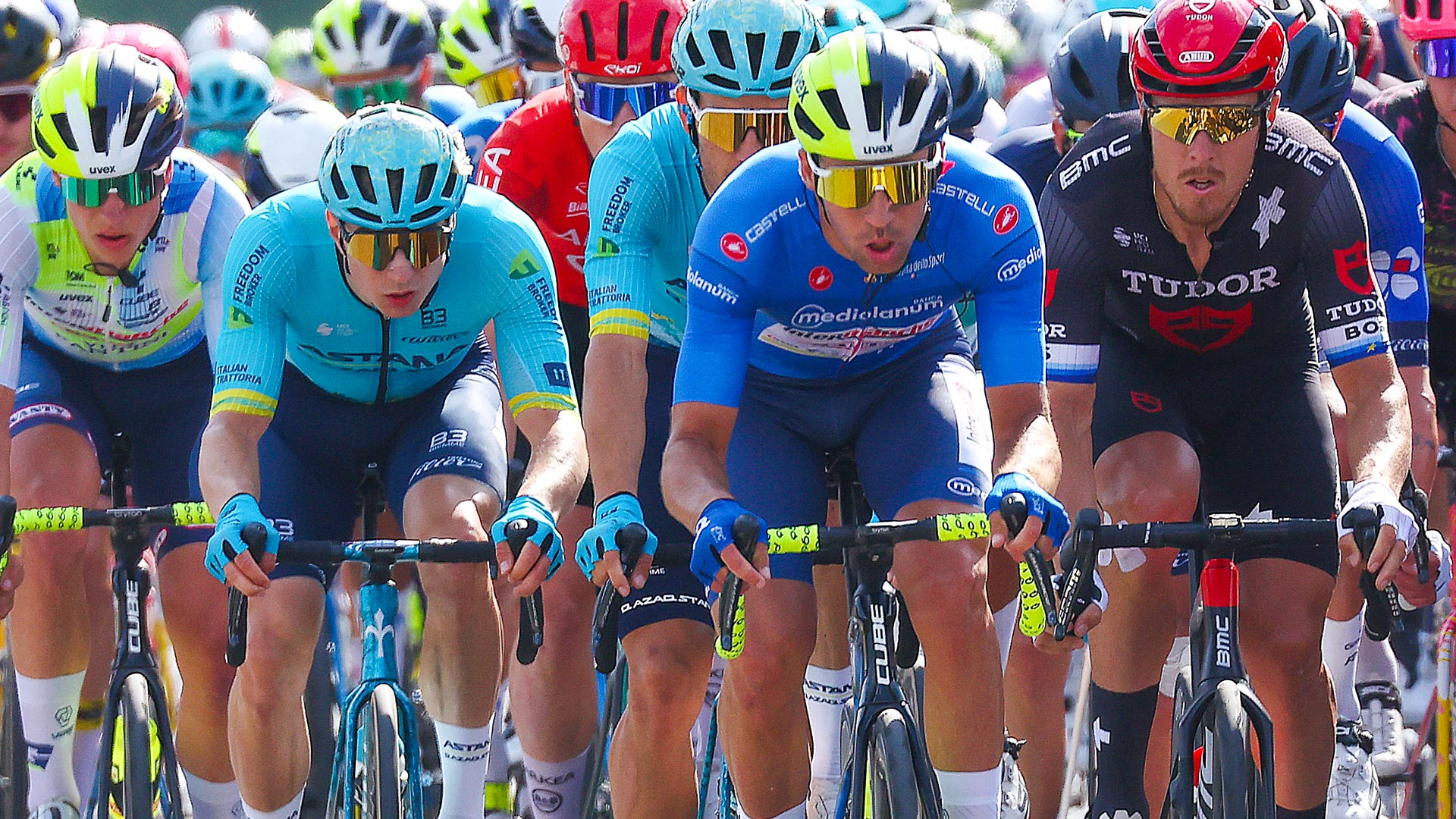
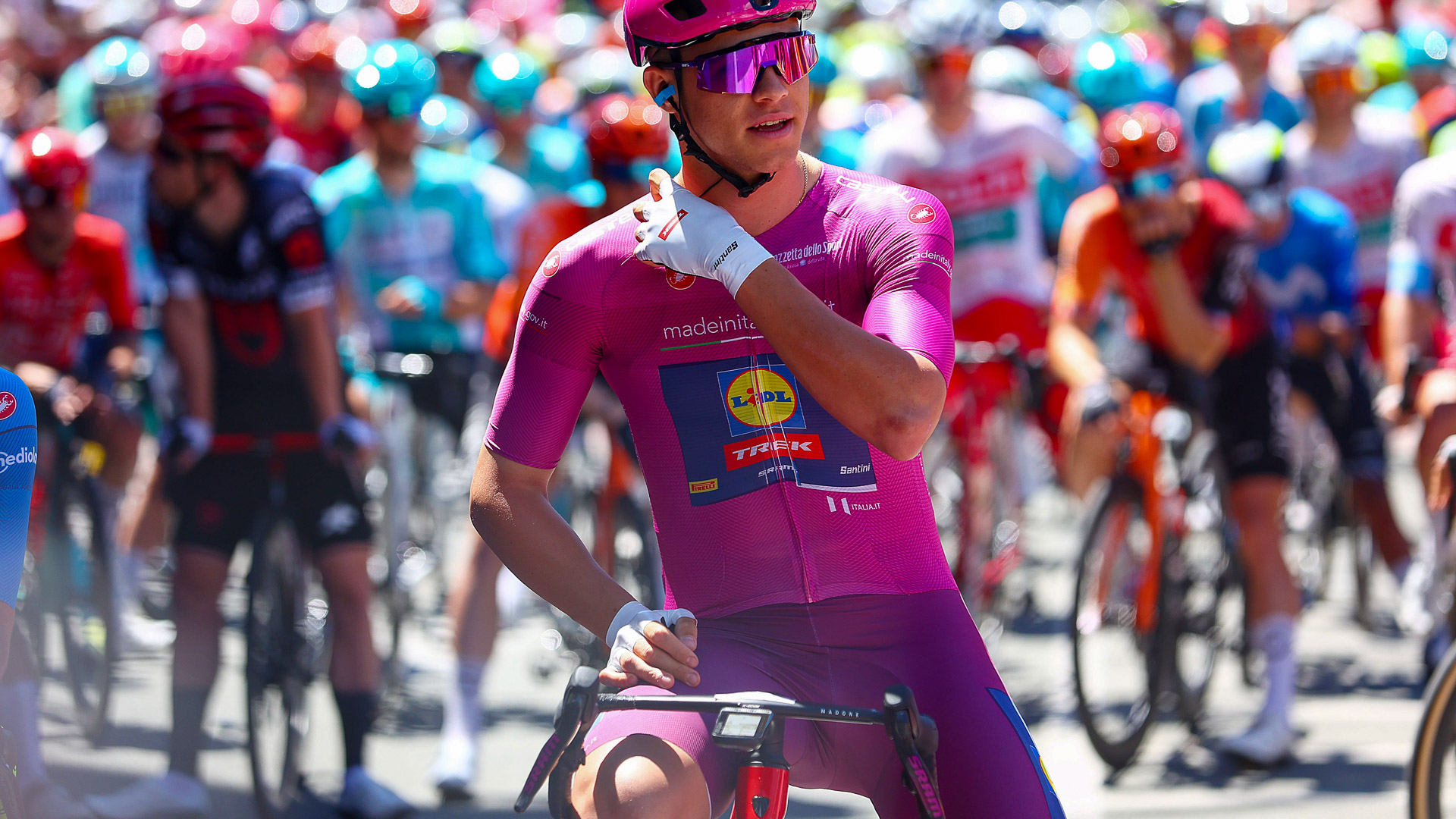
But if the UCI hoped to rely on its rules for rationale for its displeasure, a closer inspection of those rules doesn’t provide much clarity. Articles 1.3.051 to 1.3.055 of the UCI regulations govern the use of race leader’s jerseys.
TL;DR: the regulations state leader’s jerseys are mandatory for stage races. Of most interest, though, is article 1.3.054 – “The wearer of the leader's jersey shall be entitled to match the colour of his shorts to that of the jersey.” Given this year’s pink leader's jersey features matching granata, or maroon (apparently, it’s not purple) accents, that opens one plausible argument for matching color. In fact, RCS Sport CEO Paolo Bellino made that exact case, telling Eurosport that, "In my opinion, absolutely as per the rules, we have matching colours."
The kit did look sweet; while modern suits are rarely a match for the classic leader's jersey-and-plain-black-shorts look Jhonatan Narváez sported on stage 2, Pogi's two-tone look was so much better than the god-awful yellow submarine tribute suits or polka-dot onesies we’ve seen every July for the past decade or more. But Bellino's matchy-match rationale was not the only argument in favor of the Slovenian's sartorial splendor.
Another section of article 1.3.053 makes clear that the matching-kit provision applies to any leader's kit: jersey and shorts separates, and tops and bottoms of skinsuits. It also references a separate document, the "UCI jerseys visual guidelines," which on page 116 illustrates the design options for a race leader’s skin suit. The green boxes on the chest and legs in the document (white in the picture below) are reserved for “team/riders sponsors logo zones,” and not really the issue here.
The yellow or “organisers zone” are where the questions lay and the document clearly defines the design options in these spaces: “The Organisers Zones are situated wherever is not a Team’/Rider’s zone of the Jersey/Suit, as indicated in the yellow areas on all the previews,” and crucially, “the Organiser is free to use any design and colour for this zone.” [Italics added]
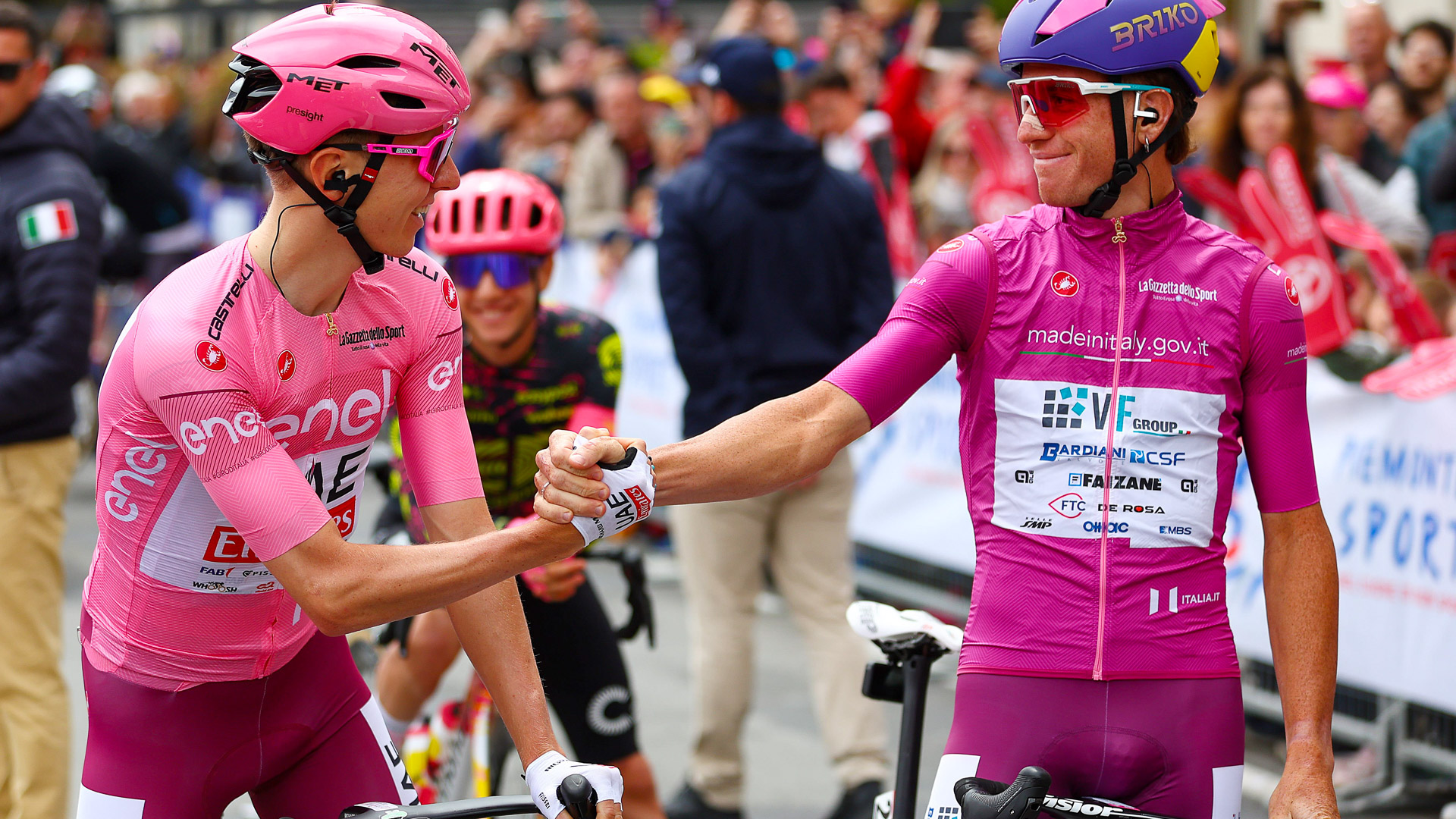
Baby I could never steal you from another
Pogačar’s two-tone suit may be different and may not be to everyone’s liking. It may even be a little confusing; at one point during stage 3, I wondered if Pogačar held both the pink and Ciclamino points jersey and the suit was perhaps a combination of the two. That would seem to be the most logical UCI argument against it, but regardless, the suit was in keeping with the UCI rules.
Unless, of course, the UCI decided to ignore the actual wording of the rules and years of precedence to invoke its own new interpretation of them quicker than you can say, “Pogi the pink and purple panther." The UCI did seem to single out Pogačar, given that the two-tone points and mountains leaders suits remained in use throughout, without objection from the commissaires.
Castelli and RCS’s interpretation of the “Organiser is free to… use any colour” was that they were free to use any colour. The UCI’s interpretation was that they were free to use any single colour. In the absence of the word "single" from the rule, Castelli and RCS appear to have the stronger argument, and firmly believe the kit is within the rules.
The case that Castelli and RCS made to the jury explained that the maroon shorts were specifically chosen to commemorate the 75th anniversary of the Superga air disaster in which 31 people, including 18 players and six staff from local Torino FC, lost their lives on May 4, 1949. With the Giro's Grande Partenza in Torino coinciding with that anniversary, the decision was taken to include the maroon colour in a nod to Torino FC's colors, while the Torino motto “Grande Torino solo il fato li vinse” (only fate defeated them) features on the hip.
Reports suggest the jury agreed but, nevertheless, decided to delegate the final say on the matter to the powers that be in Aigle.
Those powers finally came back with an answer Wednesday evening and have approved the use of the two-tone suit for the remainder of the Giro. The complete about-turn would be laughable if the whole episode weren’t the world governing body of our beloved sport atop another mountain-sized molehill thanks to its selective and subjective interpretation and enforcement of the rules.
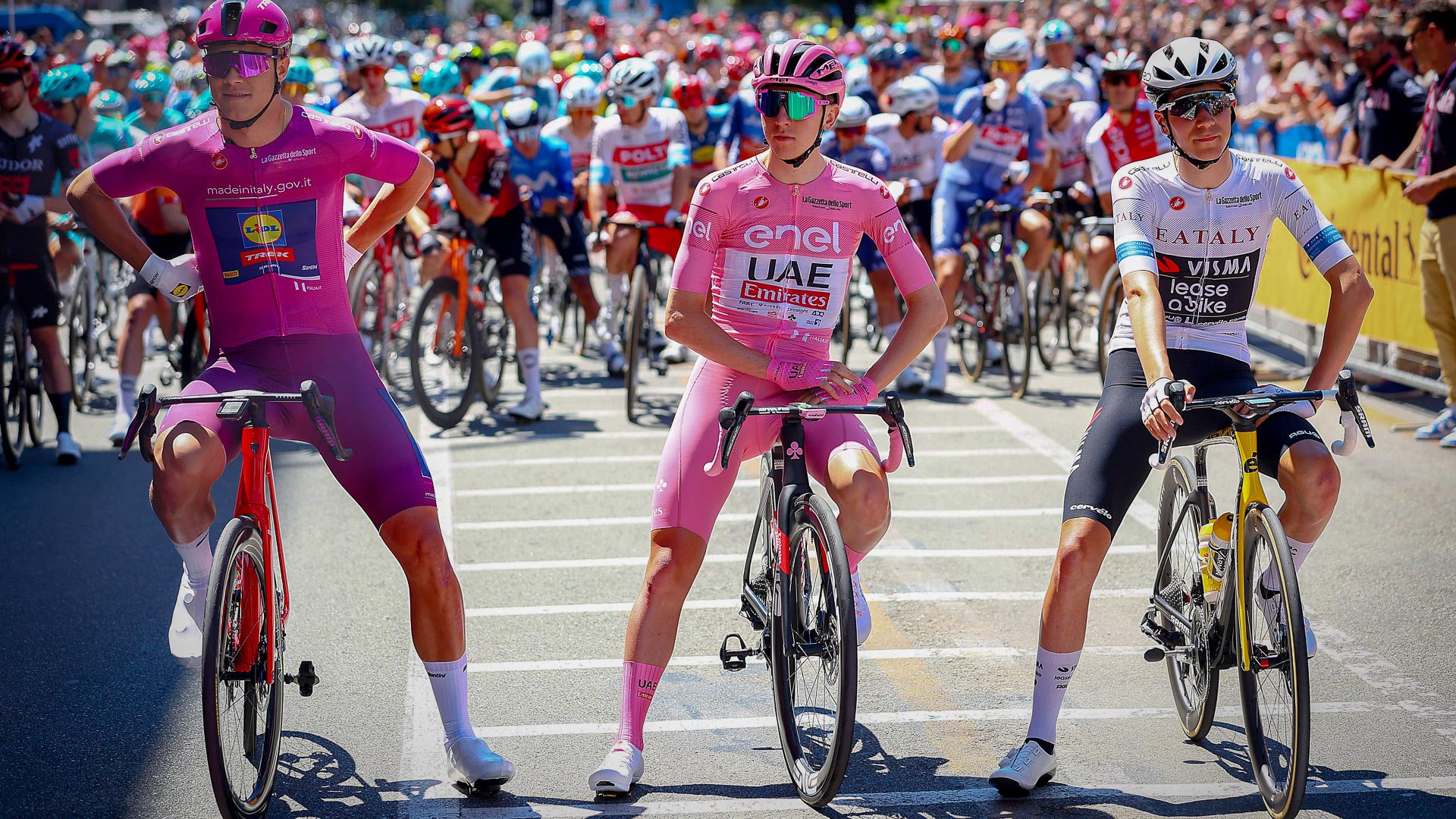
It's time we all reach out for something new (that means you, too)
So how did this whole silly episode happen at all? There are a few possible scenarios. It’s not entirely clear where the initial decision to prohibit the maroon and pink suit came from. If it was commissaries on the ground, 1) had they misinterpreted the regulations, and 2) if so, why didn’t they prohibit the use of the points and mountains classification suits, which also feature two-tone designs? We also don't know why the jury then deferred judgement to Aigle, which took two days to make a decision.
If it wasn't the jury's own initiative, another possibility is that someone in UCI HQ saw the suit and didn’t like it. Time and time again I’ve heard the UCI don’t like surprises, and clearly they – at least the jury – were surprised by Pogačar’s purple shorts. It’s possible they found the purple confusing, but nothing in the rules expressly prevents similarity in those designs.
A third, less-likely scenario here is the possibility the UCI is grappling with how to deal with the uneven playing field skinsuits currently present, and Pogačar’s suit isn't the last we hear of race suit bans.
The wealthiest teams now spend a small fortune every season optimising and customising their top GC and TT rider’s skin suits, only for those riders to miss out on said gains should they find themselves in a race leader’s suit, which is assembled on a far more-compressed timeline.
The top teams would make their own race leader’s replica suits in a heartbeat if they could, but most teams can’t afford such luxuries. On the flip side, should a race leader have to sacrifice the not-so-marginal gains of a properly fitted and aero-optimised suit from their team apparel partner exactly when they need it most? There lies the great skinsuit conundrum that the sport hasn’t yet had to fully navigate, but it’s not difficult to imagine a team, rider, race organiser, and kit supplier all turning up to a CAS hearing following another Fignon vs. LeMond-esque final-day showdown where the rider wearing the race-supplied suit loses a Grand Tour by eight seconds or less.
You say you want a leader, but you can't seem to make up your mind
With that and this week’s events in mind it feels like the UCI could be considering some form of race or skinsuit clamp down, perhaps even a ban.
It's the UCI’s stated ambition to retain supremacy of man over machine, something almost every cyclist can agree is important: it’s partly why we race bikes and not cars or watch the Giro but not the E-Giro. At the heart of the problem, as with so many technical challenges the UCI faces, are a series of conflicting realities: The UCI wants to retain this supremacy for the rider by effectively trying to force the science genie back into the bottle, but the UCI's approach is to essentially play whack-a-mole with each and every innovation as it arises.
Again, Pogačar’s purple pants weren’t a marginal gain, but the UCI treating an aesthetic issue with all the seriousness of a performance one – and in much the same "ban first, ask questions later" approach – illustrates perfectly how it's failing the sport. I’ve already had conversations with manufacturers questioning their R&D spend in light of the Giro Aerohead II “you are on notice” debacle from mid-March. No doubt other clothing manufacturers are having similar thoughts this week having seen Castelli presumably spend a considerable amount of advertising budget on sponsoring the Giro only to fall foul of a rule that doesn’t exist.
The UCI want airtight regulations, just not the challenge of trying to write/enforce them. So they keep it vague and make stuff up on the fly. None of us want an overly regulated sport, and commissaires do need some flexibility, especially considering most (perhaps all of them) are not full-time staff and cannot be expected to get every decision right all the time. But ultimately what we cannot have is a governing body that decides on a whim what is permissible and what isn’t based on their own subjective ideology of how the sport should look.
Did we do a good job with this story?



